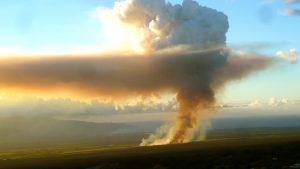Ask the Mayor: Who Will Pay for Cane Field Fire Suppression?

PC: Laurel Douglass
Mayor Alan Arakawa answers some of the questions submitted to his staff.
Submit your own questions about County of Maui programs, services, operations or policies to Mayor Alan Arakawa at AskTheMayor@mauicounty.gov, 270-7855 or mail them to 200 S. High St., 9th Floor, Wailuku, HI 96793.
Questions submitted will be considered for inclusion in the “Ask the Mayor” column.
Aloha Mayor,
Q: Who will be paying for fire suppression in the abandoned cane fields belonging to A&B this summer?
I hope the county has made provisions for fire suppression with A&B so the taxpayers of Maui will not be left holding the bag.
In the April 20, 2017, issue of The Maui News, there was an article about the HC&S shutdown causing urgency to wildfire training for County firefighters. The article stated that A&B, the landowner, no longer has sufficient staff to fight wildfires. So the second question is this: Isn’t A&B responsible for removing weeds and brush from their fallow lands? If they are not controlling the brush, shouldn’t the fire department be citing them to clean it up? It doesn’t seem fair that everyone else has to pay for A&B’s fire control.
A: To answer your first question, the reality is that no matter the size of the property or who the owner is, the taxpayers of County of Maui pay for responding to fires. To answer your second question, in large areas such as in A&B’s case, the fire code does not require property owners to remove all combustible vegetation.
However, the Maui Fire Department is currently in discussion with A&B on its mitigation plans, including potential firebreaks where necessary to protect residential neighborhoods.
With regard to brush or overgrown combustible vegetation that may be considered a fire hazard to structures, MFD has the authority to require any landowner to clear a minimum of 30 feet (i.e. a firebreak) of combustible vegetation hazard from structures; a 10-foot clearance is required from electrical utility equipment and roadways.
Property owners are responsible for removing combustible weeds and brush over 18 inches in height in these areas.
It is the county’s hope that as much of the former sugarcane land as possible would be put back into agriculture to maintain the usage and production of our ag lands. Keep in mind that besides the threat of fire, infestations of mice and insects like mites are also likely to cause issues now that cane cultivation has been halted.









